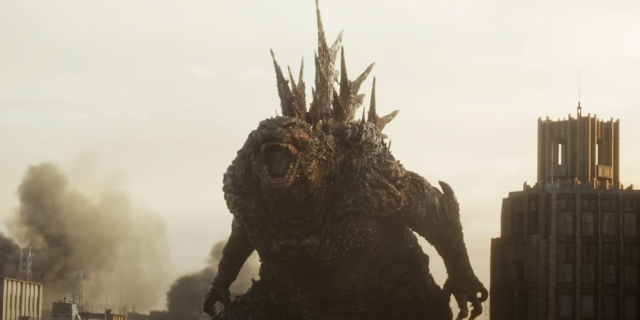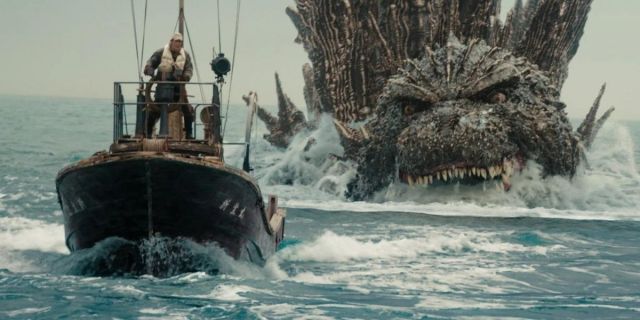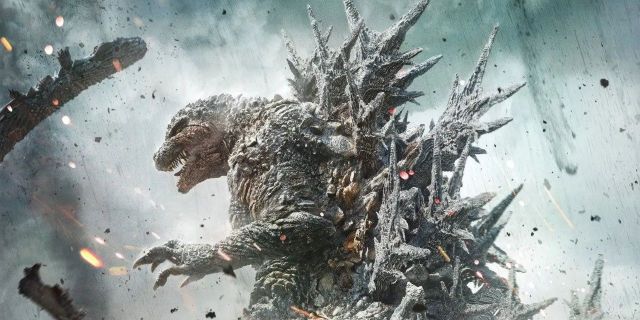Godzilla Minus One is everything fans and newcomers could want from a Godzilla film. It’s a return to classic form, bringing the King of the Monsters to the early days of existential horror and nuclear angst. This sweeping blockbuster is epic in its scale, but there’s a heart beneath its jaw-dropping spectacle. Anyone looking to summarize everything beautiful about Kaiju cinema need not look further than Godzilla Minus One.
Takashi Yamazaki wrote, directed, and provided visual effects on Godzilla Minus One. He’s the primary creative voice behind the film, but it’s not his first tangle with the King. In 2007, he gave Godzilla his first full CGI cameo outside his franchise in the sequel to his breakthrough film Always: Sunset on Third Street. Yamazaki later crafted Godzilla the Ride for Seibu-en Amusement Park near Tokyo. Yamazaki spoke frequently about his love for Ishiro Honda’s original 1954 Godzilla and Godzilla, Mothra and King Ghidorah: Giant Monsters All-Out Attack, the two outings that might stand next to Minus One on the franchise’s winner’s podium.
RELATED: Best Japanese Godzilla Movies For Beginners
Godzilla Minus One establishes its personal and national stakes in its first few minutes. Kamikaze pilot Kōichi Shikishima abandons his mission, claiming technical difficulties to escape his fate, only to meet a new threat. Godzilla emerges from the sea and tears the Odo Island base to shreds. Shikishima’s allies rely on him, but he chokes under the pressure. He survives but returns to what’s left of his home, racked with guilt. He stumbles upon Noriko Ōishi, a young lady raising an infant she rescued from dying parents during the bombings. Shikishima forges a shaky family in the wreckage and a new career destroying mines off the coast of Japan. His new life, literally cleaning up the mess left by the war to provide for two of its orphans, falls apart after American nuclear tests at Bikini Atoll. Godzilla emerges mightier than ever, and Shikishima feels the only way to end the war in his heart is to defeat the monster who haunts his nightmares.

The shortest recommendation available for Godzilla Minus One would be that it’s the perfect Kaiju movie. It’s not a flawless film, but its issues are glued to its genre. Most giant monster movies struggle to stay compelling between scenes of mass destruction. The CGI creatures or dedicated professionals in heavy suits appeal to the part of the brain that loves knocking down sand castles or fireworks displays. They’re an empty spectacle without an identifiable core of human drama and thematic depth. Godzilla Minus One resurrects the themes of the original 1954 classic while examining more internal details of the World War II setting. Much of the narrative acts as an apology or admonition for the suicidal tactics used in the war. The story’s most intelligent character practically looks into the camera and explains everything they did wrong in the 40s. That thematic weight tangles beautifully with Shikishima’s internal struggle as a man who feels he should be dead. Minus One upends the stereotype of boring human stories in monster movies.
The spectacle isn’t empty in Godzilla Minus One, but it is masterfully executed, massive, sweeping, and among the most memorable blockbuster material in recent years. Shin Godzilla‘s beautiful atomic breath scene stood above most examples in the franchise, but Minus One finally tops that standard with its new take on the King’s most iconic power. Most of the action takes place miles from the cityscapes fans are used to. Godzilla makes landfall three times in this film. He lives in the sea, tangling with massive battleships in his natural habitat. Minus One depicts his physical might with heavy objects sent flying from off-screen. Yamazaki is fascinated by Godzilla’s healing factor, frequently displaying the mighty creature suffering tremendous wounds that quickly knit themselves together. His atomic breath earns only a few spotlight moments, but they’re the centerpiece. Godzilla Minus One cost $15 million to make, around one-tenth of every American entry’s budget. The fact that it looks as good, if not better than its competition, is a testament to artistic skill over ever-increasing price tags. Hollywood must take notes.
Every detail of Godzilla Minus One works. The music is excellent. Naoki Satō, a frequent collaborator with Yamazaki, evokes the magnificent scale with an orchestral score that feels pulled from a Studio Ghibli offering. The film borrows tracks from King Kong vs. Godzilla and Mothra vs. Godzilla, as well as the legally mandated new orchestration of Akira Ifukube’s classic “Godzilla (Main Theme.)” Yamazaki’s broad palette of influences shows through in the final product. His experience designing an amusement park ride feels especially appropriate. Fans will want to see Minus One on the largest available screen with whatever add-ons they can stomach. This should be an event movie for anyone who has ever enjoyed the Kaiju genre.

Godzilla Minus One exceeds the highest imaginable expectations for its premise. This is the new standard by which all Kaiju films will be measured. It’s a sincere epic with touching personal stakes and sweeping spectacles. There’s no secret here. It’s a pure, unalloyed encapsulation of what was, is, and could always be great about the King of the Monsters. Those fans who love the goofy side of Godzilla will find plenty of classics to choose from. Godzilla Minus One is among the franchise’s best. Run towards this giant monster.
Godzilla Minus One
A former Kamikaze pilot braves post-war Japan as the devastated nation encounters a new threat, the legendary monster Godzilla.











Leave a Reply